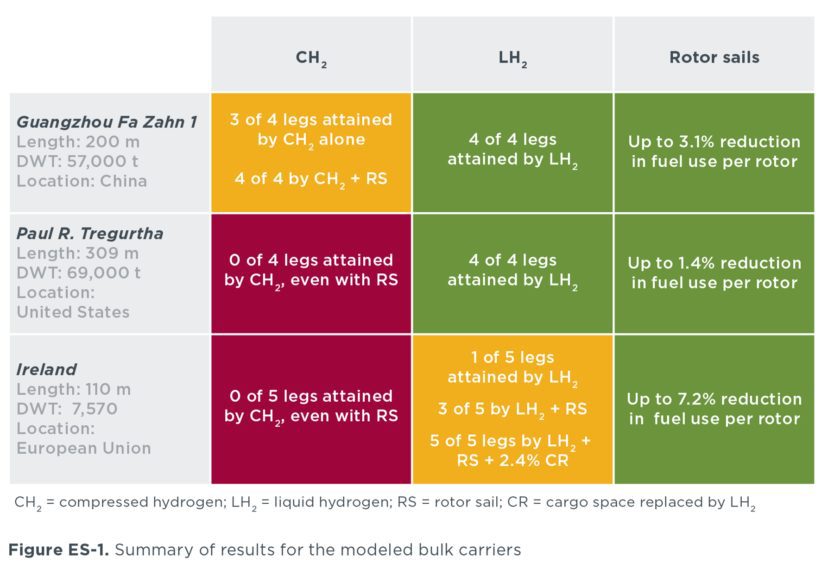White paper
Decarbonizing bulk carriers with hydrogen fuel cells and wind-assisted propulsion: A modeled case study analysis
In recent years, ICCT research has demonstrated both the potential for liquid hydrogen (LH2) fuel cells to replace fossil fuels for container ships on the transpacific corridor and the energy-saving and emissions-reduction potential of rotor sails. These two technologies could be combined to create zero-emission vessels (ZEVs), and bulk carriers could be particularly well suited because they are more likely to have enough space onboard for the fuel cell and hydrogen fuel storage systems and enough deck space for installing or retrofitting rotor sails.
This paper considers whether LH2 fuel cells or compressed hydrogen (CH2) fuel cells could replace fossil fuels for bulk carriers by investigating three ships of varying sizes: a 57,000 deadweight tonne (dwt) dry bulk carrier transiting the Chinese coast; a 69,000 dwt ore and coal carrier sailing the North American Great Lakes; and a 7,570 dwt cement carrier operating in Europe’s North and Baltic Seas. The authors used 2019 Automatic Identification System (AIS) ship traffic data and weather data observations to estimate the ships’ total energy use and the energy-saving potential of rotor sails for two routes for each ship. As shown in the figure below, the two larger ships could complete both of their modeled routes using LH2, even without the help of wind-assisted propulsion. The smallest bulk carrier does not have as much space available for LH2, and that makes it relatively more challenging for this ship. Still, results show additional legs could be achieved for the smallest ship by using rotor sails in combination with LH2, and for the two longest legs, by replacing 2.4% of its cargo space with LH2 in combination with four rotor sails.

Rotor sails can reduce the amount of fuel that ships consume and can be retrofitted on existing conventionally fueled ships to reduce fossil fuel consumption. They can also be installed on new ships, including hybrids and ZEVs, to save on energy costs.

Figure. The potential of wind power on the bulk carrier Ireland. Here we applied wind speed and direction to simulate power savings from rotor sails. By using available wind power on this route, Ireland could generate less than 20 MWh of energy and save up to 7.2% in fuel use per rotor.
